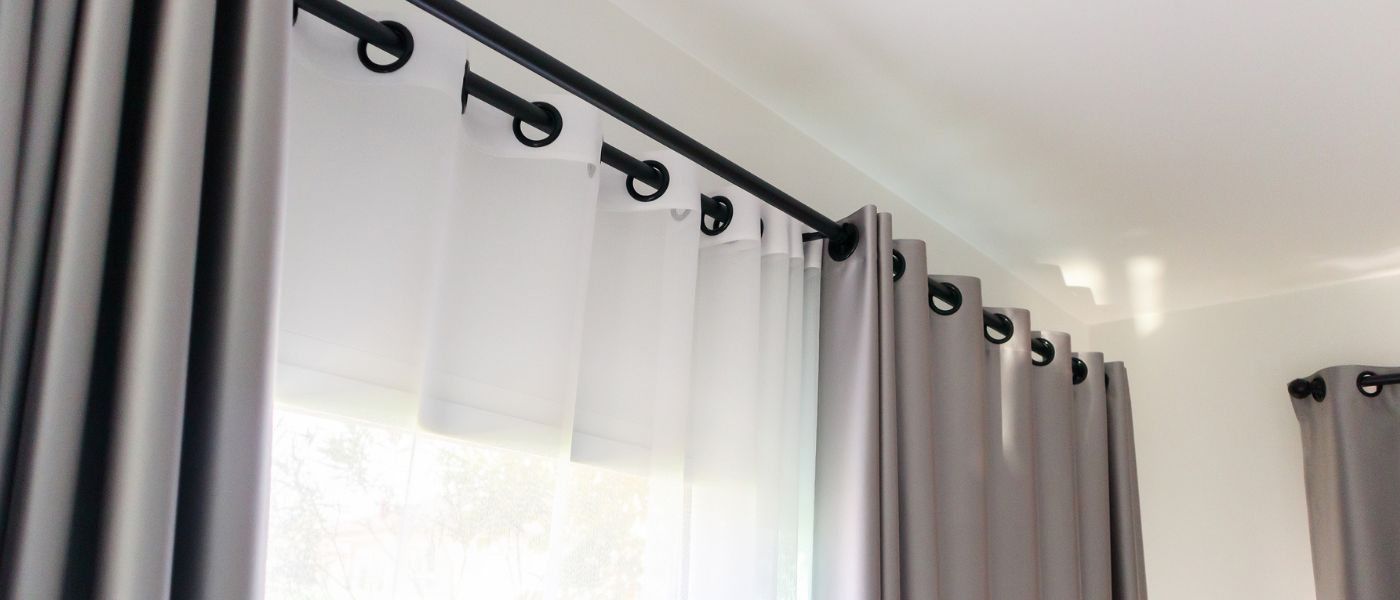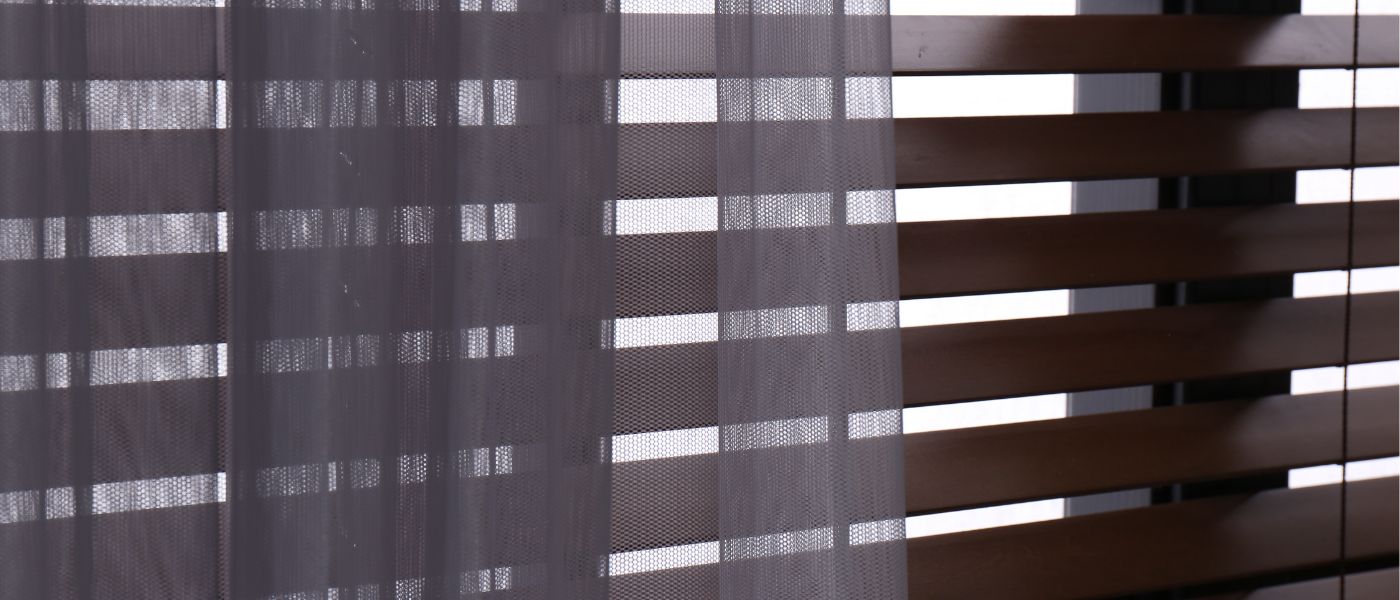When it comes to home decor, the right window treatments can elevate your space from ordinary to extraordinary. But how do you decide between the sleek functionality of blinds and the elegant charm of drapes? In this comprehensive guide, we’ll explore the unique features of both blinds vs drapes.
Major Differences Between Blinds vs Drapes
When deciding between blinds vs drapes for your windows, it’s important to consider various factors that can influence your choice. Blinds offer a more structured look with their adjustable slats, allowing you to control light and privacy effectively.
They are often made from durable materials like wood or vinyl, making them easy to clean and maintain. This makes them ideal for high-traffic areas or homes with children and pets.
In contrast, drapes provide a softer aesthetic that can enhance the overall warmth of a room. Available in numerous fabrics, colors, and patterns, they can dramatically change the feel of your space while also offering better insulation against heat and cold.
Drapes tend to absorb sound better than blinds, which can help reduce noise levels in busy households or urban environments. While window treatment installation methods differ—blinds may require precise fitting into window frames while drapes simply need rods—both options allow for creative expression in home decor.
Key Style Versatility In Each Option
When considering blinds vs drapes, style versatility is a game changer for any room’s interior design. Blinds offer a sleek, modern look that can easily complement minimalist or contemporary designs.

Their clean lines and varied materials, from wood to aluminum, allow for customization that can fit any aesthetic. You can adjust the slats to control light and privacy, making them functional yet stylish.
On the other hand, drapes bring warmth and texture to a space. They can be bold and colorful or soft and neutral, giving you the freedom to express your personality. Drapes also add depth with their flowing fabric, creating an inviting atmosphere.
When layered with blinds, they provide an opportunity to mix styles — bringing together the best of both worlds for a chic, multi-dimensional look. Whether you lean towards modern or traditional, understanding the key differences between blinds vs drapes allows you to create a truly unique ambiance in your home.
Light Control Between Blinds vs Drapes
When it comes to window light control, the debate between blinds and drapes is more than just a matter of style — it’s about functionality. Blinds offer precise light management, allowing you to adjust slats for the perfect amount of natural light throughout the day.
This feature is especially beneficial in rooms where you need to minimize glare, like a home office or a media room. On the other hand, drapes can provide an all-or-nothing approach to light, creating a cozy atmosphere when drawn but offering less flexibility when it comes to fine-tuning brightness.
If you want great lighting, then consider the specific needs of each room in your home. For example, in a living room where you might want to enjoy the sunlight during the day but have the option to block it out for movie nights, a combination of both blinds and drapes could be ideal.
This allows you to harness the advantages of both styles — using blinds to filter light during the day and drapes to create a warm, inviting ambiance at night.
Durability and Longevity Between Both Materials
When it comes to choosing between blinds and drapes, understanding the durability and longevity between both materials is crucial. Blinds are often made from sturdy materials like aluminum or vinyl, which can withstand daily wear and tear.

They’re less likely to fade from sunlight exposure, making them a practical choice for high-traffic areas. On the other hand, drapes, typically made from fabric, offer a softer look but can be more susceptible to fading and staining over time.
Blinds typically last longer than drapes due to their robust construction. With proper maintenance, blinds can last anywhere from 5 to 10 years or even longer, depending on the quality of the materials used. They are also easier to clean, as most can be wiped down with a damp cloth or dusted without the risk of damaging the fabric.
In contrast, drapes may require more careful handling and regular washing to maintain their appearance. While high-quality drapes made from durable fabrics can last several years — often around 3 to 7 years — they may need to be replaced more frequently than blinds.
Maintenance and Care for Blinds and Drapes
When choosing between blinds vs drapes, consider your lifestyle and the level of maintenance you’re willing to commit.
Blinds, often made from materials like wood or vinyl, are generally easier to clean. A quick wipe down with a damp cloth can keep them looking sharp.
In contrast, drapes require a bit more attention; they often need regular washing or dry cleaning to maintain their fresh appearance. However, drapes can add warmth and texture to a room, creating a cozy ambiance that blinds may lack.
Installation Processes for Blinds and Drapes
Installing blinds and drapes can transform a room, but the process doesn’t have to be daunting.
When it comes to installation, always read the manufacturer’s instructions carefully so that you avoid mistakes. Many modern blinds come with user-friendly brackets and tools, making the process smoother than ever. For drapes, selecting the right rod is key; decorative rods can add style while providing support.
Remember to use a level to ensure everything is straight — nothing ruins a beautiful set of drapes like a crooked line.
Finally, don’t rush! Take your time to adjust and fine-tune each element, ensuring that your new window treatments not only look good but also function well.

How to Love Your Home Again
Sometimes we can feel uninspired and tiresome with the home we once loved so dearly.
Jan
Affordable Ways to Glamorize Your Home
There are many affordable ways to glamorize your home; elka Interiors & Construction is here
Jan
How to Stage Your Bathroom to Add Appeal
Home staging is a great way to incorporate an added sense of luxury and increase
Jan